I am about to introduce you to a company that has made the technological discovery of a lifetime.
Centuries of research from well-known scientists may need to be rewritten when this radical discovery is unveiled.
Companies will likely be quaking in their boots once their leaders see what they could be competing with.
This Company has discovered a technology so radical that fundamental equations we have been using for over 400 years may need to be redefined.
In fact, when the Company presented the features of this technology to a senior executive from a world leader in global aerospace, defense, and security, he sarcastically responded:
“Please tell us how you managed to break the laws of physics.”
I assure you they didn’t break the laws of physics, but his response goes to show you just how radical this technology really is.
Now what if I told you we could invest in this company before it unveils its technology?
What if I told you that we could invest in a technology that could literally change the way we see the world?
What if I told you that we could invest in a discovery so radical that even some of the brightest minds are left scratching their heads? That is, until they see it with their own eyes.
Well, you can.
And in just a bit, I’ll tell you about the only Canadian stock involved in this technology.
But before I do, it’s important you understand the full story.
A Massive Industry
Last week, I wrote a Letter explaining how big the photonics industry is.
According to a new analysis by SPIE, the value of annual sales in the global photonics market in 2013 alone was an incredible $182 billion.
Every year, hundreds of billions of dollars are generated as a result of light-based technologies. But that should come as no surprise since photonics are responsible for some of the world’s biggest breakthroughs:
- Quantum computing capable of calculations 100 million times faster than single core processors;
- Photonic microchips more than 50 times faster than current electronic ones;
- Li-Fi that’s 100 times faster than Wi-Fi;
- and even invisibility cloaks.
In the world of optics and imaging, we’re also about to witness an incredible change.
From computational photography to the creation of Extremely Large Telescopes capable of seeing far beyond what we ever imagined, we are about to take part in incredible new discoveries.
And one Company could be at the forefront of it all.
But before I tell you their incredible story and radical technological discovery, it is important you understand why they could change the way we see the world.
More importantly, it will give you an idea of just how big their breakthrough really is, and show you why the market opportunity is massive.
The Same for 400 Years
Hundreds of years ago, on the island of Murano, we learned how to make transparent glass.
We then discovered that by adding a curve to it, light is magnified, and images are distorted. This led to the creation of lenses and spectacles and became the basis of optics as we know today.
During the 14th century, convex (curved out) lenses were used to correct farsightedness.
A hundred years later, concave (curved in) lenses were used to correct nearsightedness.
Soon after those discoveries, a spectacle maker by the name of Hans Lippershey decided to hold two lenses apart in a straight line. By doing so, he realized that the two lenses together could make distant objects appear much bigger.
With this discovery, Lippershey had built the world’s first refracting telescope.
And it changed everything.
A New Understanding of the Universe
When Galileo heard about this telescope, he decided to build one of his own.
But instead of pointing it at terrestrial life, he pointed it up toward the heavens.
From that point on, our place in the universe as we knew it completely changed.
By simply taking a piece of technology and using it for something else, Galileo changed the history of the world. His findings using a telescope not only ushered in a new era of telescope creation, but also led to the revelation of galaxies beyond galaxies.
But Galileo’s refracting telescope had limits.
First, when a strongly curved lens bends, or refracts, beams of light, the light doesn’t all come to a single point. Since the different beams of light don’t all line up, the images from these early telescopes were very fuzzy.
Also, some of the light coming through the lens would have its colours split apart, and that distorts the image. We call this chromatic aberration.

The only way to minimize the blurriness and rainbow colours is to use thinner lenses with a shallower curve.
 Second, in order to see further away, the lenses have to be further apart. That’s because light comes to a focus further from the lens, which is why refracting telescopes get greater magnification as it gets longer.
Second, in order to see further away, the lenses have to be further apart. That’s because light comes to a focus further from the lens, which is why refracting telescopes get greater magnification as it gets longer.
So 17th-century astronomers made thinner lenses, with shallower curves and spaced them further and further apart.
On this quest to see ever further, telescopes reached absurd lengths of up to 150 feet. That’s half the length of a football field!
But while these telescopes got bigger and better, despite being ridiculously long, they still couldn’t eliminate the rainbow colours altogether.
Surely, there had to be a better way.
And there was – it just needed to be discovered.
A Novel Breakthrough
A few decades later, one of science’s greatest minds solves the problem.
Isaac Newton found that as white light passes through a glass prism, it refracts (bends) and breaks up into the colours of the rainbow. This was the root of the problem.
He discovers that when mirrors are curved, they too could bring light to a focus, just like a lens. The difference is that when we use a mirror instead of a lens, the light bounces off but doesn’t pass through it, which avoids breaking up the image and prevents the rainbow halo.
Now stay with me because this is extremely important.
With this knowledge, Newton makes a curved mirror only 1.5 inches across and inserts it into the base of a 6-inch tube.
Light from the heavens passes down the tube, reflects off the curved mirror, and then reflects off a second flat mirror, which is then focused by an eyepiece.
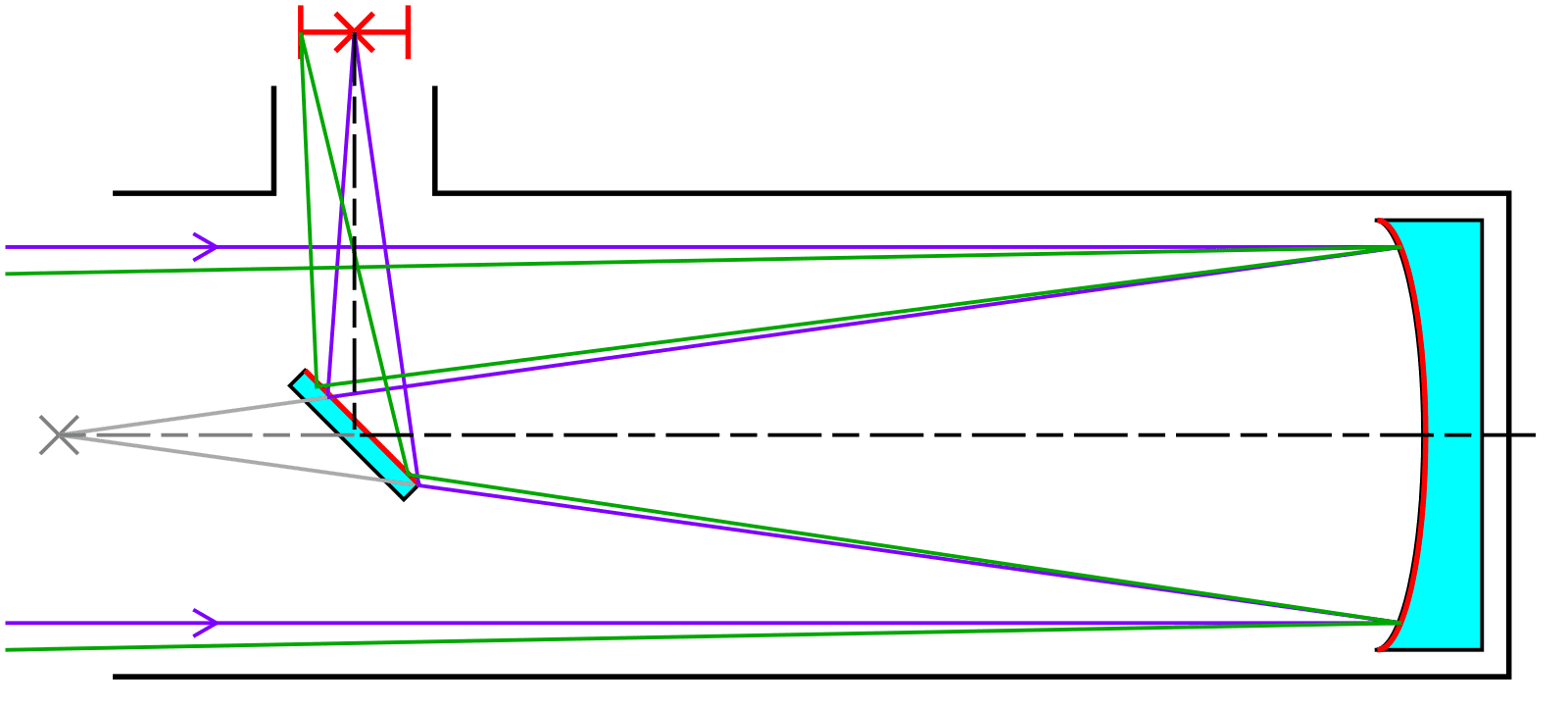
This discovery was revolutionary.
Not only did his reflective telescope avoid the rainbow colours, but it was significantly smaller.
Newton’s 6-inch reflective telescope was equivalent to the magnification of a 4-foot refracting telescope that uses lenses!
This reflector telescope that Newton designed was an incredible breakthrough.
Today, telescopes, binoculars, and even camera lenses are still designed using the same principles discovered over centuries ago by Galileo and Newton.
In fact, Newton’s design still stands as the basis for today’s most advanced telescopes including the Hubble Space Telescope, and all of the new class of Extremely Large Telescopes, such as the upcoming Giant Magellan Telescope (GMT), being built today.
And there hasn’t been a revolutionary design to the telescope for 400 years.
Until now.
A New Revolution
Be prepared, because what I am about to tell you is incredible.
From DSLR to iPhone cameras, to the world’s largest telescopes capable of zooming in on stars beyond our galaxy, all of these technologies revolve around a simple concept: gathering, bending, and focusing light.
For nearly 400 years, we have understood that in order to gather and focus light to retain an image, we had to use curved lenses, or curved mirrors.
But what if we are wrong?
What if a curved lens or curved mirror are not the only way to gather and focus light to retain an image?
But what if there was another way?
What if a curved lens or curved mirror are not the only way to gather and focus light to retain an image?
Today, I am going to introduce you to a Company whose founders have broken the basic fundamental of optics: that apertures need to be curved and circular.
The implications for this discovery are startling.
And it all begins with…
CONTENT LOCKED
Enter your email to get instant access (it's free!)
to this special content post:
*By entering your email, you are agreeing to our privacy policy and terms of use. You will also receive a free weekly subscription to the Equedia Letter, one of Canada's largest private investment newsletters. Don't worry, it's free and you can cancel at anytime.
NexOptic Technology Corp
TSX VENTURE: NXO
(OTC: ELSRF) (Frankfurt: E3O)
NexOptic Technology Corp. (TSX VENTURE: NXO) has an option to acquire 100% of Spectrum Optix, a Company developing technologies relating to imagery and light concentration applications. The full details of this deal can be found by CLICKING HERE.
Spectrum’s core technology, the patent-pending Blade Optics™, contains flat lenses and aims to disrupt conventional lens and image capture-based systems. This includes everything from telescopes, to cameras and mobile devices, by creating a lens system that reduces the depth (relative to aperture size) currently required in many traditional curved lens stacks.
Last week, NexOptic announced that together with Spectrum Optic, they have successfully completed the ‘Trade Study’ phase of their proof of concept (POC) prototype development program.
The completion of the Trade Study showed the following achievements:
- Lens stack depth to aperture ratio of near 1:1
- Use of flat lenses
- Square or rectangular aperture as opposed to circular
- Significant effective focal length in a compact form factor
- Scalable to various sizes
Via NexOptic:
“Spectrum’s POC prototype is being designed as a fixed magnification digital telescope with a narrow field of view and will be similar in function to many conventional telescopes sold today.
However, as a result of the application of Blade Optics™, a unique distinction of Spectrum’s lens design is its compressed lens stack depth to aperture ratio compared to traditional curved lens systems for fixed magnification imaging.
This could set Spectrum’s patent pending Blade Optics™ technology apart from existing lens technologies in the fixed magnification lens market, which includes products such as spotting scopes, telescopes, binoculars, certain camera lenses and other imaging products.”
News releases are never exciting, but if you look hard enough, you’ll realize that what Spectrum and NexOptic have achieved is absolutely incredible! And soon, the headline will draw expert inquiries from around the world.
Just as Newton significantly reduced the length of telescopes through his revolutionary design, Spectrum, with its Blade Optics™ technology, is able to reduce Newton’s length even further.
How much further?
The Breakthrough
Newton’s first telescope had a 1.5″ aperture and was 6″ long.
Based on a near 1:1 depth to aperture, a Blade Optics™ telescope with a 1.5″ aperture would be, well, around 1.5″.
Just to show you how dramatic that really is, below is what a 5″ aperture traditional telescope looks like when compared to a 5″ aperture Blade Optics™ telescope:

Absolutely incredible.
But just as incredible is that the actual aperture of Blade Optics™ may be even bigger than what it claims when compared to a traditional lens aperture.
More Light, Better Image
In optics, an aperture is a hole or an opening through which light travels.
Generally, the bigger the aperture, the more light it captures.
Via How Stuff Works:
“A telescope’s ability to collect light is directly related to the diameter of the lens or mirror — the aperture — that is used to gather light. Generally, the larger the aperture, the more light the telescope collects and brings to focus, and the brighter the final image.”
But Blade Optics™ doesn’t have a diameter because doesn’t have a circular aperture.
That means many of the formulas and equations, including aperture, have to be redefined when using Blade Optics™ technology.
For example, to determine aperture area, we use the following, via Wikipedia:
“The amount of light captured by a lens is proportional to the area of the aperture, equal to:

Where the two equivalent forms are related via the f-number N = f / D, with focal length f and aperture diameter D.”
A diameter relates to a circle; Blade Optics™ uses a square aperture.
So how does that equation apply? It doesn’t.
And neither does the F-Stop* equation that many photographers use.
(*In optics, the f-number (sometimes called focal ratio, f-ratio, f-stop, or relative aperture) of an optical system is the ratio of the lens’s focal length to the diameter of the entrance pupil)
Why is this significant?
Well aside from eliciting the response of “breaking the laws of physics” by a senior executive from a global defense leader, it also allows more light to be gathered.
When you use a camera, the lens is circular. It gathers and focuses the image to a chip, which is square.
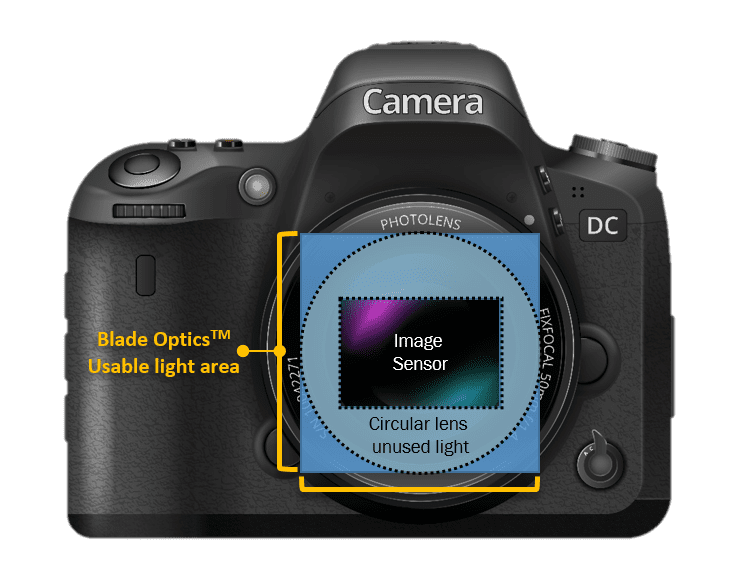
‘As you can see in the above picture, you lose a lot of light when using a camera lens because that circular lens projects the image onto a smaller, square microchip.
But since Blade Optics™ has a square aperture (can we even call it an aperture?), it naturally gathers more light.
Not only can Blade Optics™ gather more light relative to aperture size, it significantly reduces depth size when compared to traditional telescopes.
Imagine what this could mean for entire industries.
Imagine the Possibilities
Size is crucial. Much of our current optics rely on reflective or refractive telescope fundamentals.
That means in order to see further, we need bigger apertures and thus, even longer devices to house the separation.
Size has been a limiting factor for many industries including drones, military, space, cameras, telescopes, and others. If Blade Optics™ can significantly reduce the length of the optical instruments used in these different applications, it could usher in a new wave of technological advances.
That’s just the beginning.
What about binoculars and scopes that fit in your pocket?
What about pocket-sized microscopes?
What about the future of cameras?
What about the defense sector, such as drone surveillance?
The possibilities are endless.
When NASA invested $3.5 billion to build the Webb telescope, ten innovative and powerful new technologies emerged as a result; technologies that have already been spun off to help advance other scientific, medical and commercial endeavors.
Together, industries worth hundreds of billions of dollars could be disrupted and enhanced by Blade Optics™ technology.
In fact, Blade Optics™ technology uses conventional image sensors, which potential customers find very attractive. They don’t need to develop entirely new image sensors to use Blade Optics™. Furthermore, the technology also uses conventional materials so clients have options in their supply-chain.
But that’s not all.
What really excites me is the potential to learn things we never knew; the potential to see things beyond the limits of even the world’s greatest telescopes.
Let me explain.
Extremely Large Telescopes
Over the next decade, we’re going to see a new class of Extremely Large Telescopes (ELT) – all of which is based on Newton’s reflective telescope design.
These include the following:
- European Extremely Large Telescope
- Thirty Meter Telescope
- Giant Magellan Telescope (GMT)
These telescopes all have an aperture of more than a whopping 20 meters!
That means they will give us the ability to see far beyond what we’ve ever seen.
In fact, it is expected that the GMT may be able to take spectra of the atmosphere of distant planets and determine if they have the potential to sustain life!

You might be wondering: if telescopes with such large apertures can see so far, why don’t we just make even bigger telescopes?”
That’s a great question. And the answer to that is what makes me so excited about Blade Optics™ Technology.
Let me explain.
Limitations of Telescopes
Even with our technological advances, we are still limited by physics.
Traditional telescopic lenses, or mirrors, need to be curved.
Current fabrication technology only allows us to build a curved mirror or glass just over 8 meters; anymore and the glass would buckle under its own weight with movement.
So how are they building these ELTs?
With lots of engineering and computing. And multiple mirrors.
Take, for instance, the Giant Magellan Telescope (GMT) – the first in a new class of Extremely Large Telescopes, capable of exploring the cosmos with unprecedented clarity and sensitivity.
Of all the ELT’s, the GMT has the largest individual mirrors.
The GMT’s 24.5m (82 feet) primary mirror is actually comprised of seven separate 8.4m (27 feet) diameter segments.
Each of these mirror segments weighs approximately 12.5 tons, or 25,000 pounds!
But get this.
It takes a full year just to cast and cool each mirror.
After casting, the fabrication of each segment requires more than three years of surface generation and meticulous polishing.
Why?
Because each curved mirror needs to be polished down to a precision of 19 nanometers, with each spot on each curved mirror having a different dimension than the next.
A whole bunch of new optical tests and laboratory infrastructure had to be developed just to polish each mirror.
Take a look:
When the GMT is finally built, it will be nearly 61 meters tall (equivalent to a 22 story building) with an aperture of just over 25 meters wide!
Here’s the exciting part…
Could Blade Optics™ Be a Better Solution?
If we were to hypothetically use Blade Optics™ technology to build a telescope with the same aperture as the GMT, it would only be approximately 25 meters tall instead of the whopping 61 meters the GMT will be when its finished.
Common sense would suggest that it would be easier to construct a housing 25 meters tall, instead of 61 meters.
Common sense would also suggest that it could be easier to polish something that’s flat, as opposed to something that’s curved – especially the asymmetric curve of the mirrors being created for the GMT.
I may be jumping the gun on this, but Blade Optics™ Technology just seems better because going bigger seems easier with a lens stack that contains flat lenses.
If This Could Change the World, Then Why…
You might be wondering: if this is such a ground-breaking technological discovery, why haven’t scientists, astronomers, and the like gone crazy?
Let me explain that with a story.
The Story of Discovery
John and Darcy Daugela have always been interested in optics. Throughout their childhood and career, they always challenged conventional thinking.
A few years ago, when solar energy became prominent, but not economic, Darcy wanted to see if he could capture solar energy by using a plastic sheet that would cover an entire field.
His mentality was simple, “Why not?”
He never did get a good answer from the industry. But this didn’t stop him.
Instead of giving up, he built his own software program – now known as Rocket Optix – to analyze and find ways to do what no one had done in the solar space.
He put all kinds of geometries in his software and soon added an economic model, all with one goal in mind: to find out what repeatable design could make energy come out concentrated, in an economic way.
He never did come to a conclusion that would solve his problem.
But he did find something else.
During his research, he found one distinct design that could get energy to come out in a concentrated way. It was repeatable. And it used flat lenses.
Since the idea of solar was no longer on his mind, he thought, “What if this same design could be used to retain an image?”
Of course, the idea of using flat lenses to retain an image was unheard of.
In fact, when we speak of telescopes and camera lenses, there is no question if the lenses are curved; we know them to be curved, and we know them to be circular.
But Darcy’s design didn’t use a circular curved lens; it used a square, flat lens. Since there was no previous research or basis for his discovery, there was only one way to see if what his math was telling him is real. He needed to make it work in real life.
John ordered materials to test his theory.
What the brothers discovered will change optics forever.
Their make-shift prototype worked; it retained an image.
They knew he had something here, but couldn’t quite grasp how, or why, it worked. It simply had never been done before.
Their first thoughts were simple.
Someone must have done this.
NASA must have already figured this out.
So John went to a NASA conference to find out.
At the conference, he raced up to the front of the stage where a retired NASA optics expert from NASA’s Goddard Flight Centre had just given a speech.
He asked, “When would someone use flat optics?”
The expert responded, “Well, you really only have three options: total internal reflection, Fresnel lenses, and Cassegrains (whereby after you do the initial concentration, you could use flat mirrors to bounce it back.) None of which are truly flat optics, but use some flat surfaces.”
John persisted, “are you sure there isn’t another way?”
“Nope, trust me, there is no other way.”
Eureka. John knew he had something special.
Giving his background of working with engineers, John’s first goal was to punch as many holes into his discovery as possible. So he did just that: he brought his findings to people who have been studying, researching, and designing optics for years.
John first sent his design, under NDA (non-disclosure agreement), to an ex-NASA researcher with over 20 years of research and engineering experience in the field of optics.
The next day, he got an email back.
Thank you, John, but this won’t work.
But John knew it did.
So he forced a mathematical debate with her, trying to get her to understand that the math on conventional lenses was wrong.
Being a professional, she took it in stride and again, came back, called John and told him it won’t work.
She told him there was no way he could see an image with his design.
But John, staring at an image through his makeshift prototype, responded, “Of course it does…I am looking at it!”
“No, you’re not,” she said.
A day later, she followed up with an email.
“Dear John,
Your design doesn’t work.
But I couldn’t sleep last night.
Can I keep working on this idea, but not under NDA?”
“Why would she say that?” John thought.
“Why can’t I get a straight answer from these so-called experts?”
“What have I uncovered here, and what am I missing?”
This didn’t stop John. In fact, it made him even more obsessed.
Finally, his obsession led him to Ruda-Cardinal, an internationally recognized leader in optical prototype construction and design.
Instead of saying no to John, Ruda-Cardinal looked at the math and instantly got it.
They accepted John’s challenge and together they began the design of a first-of-its-kind imaging device that utilizes flat lenses.
By taking one piece of technology (meant for solar) and repurposing it for something else (the telescope), John may have changed the world – just like Galileo.
Now back to the question of why the science community hasn’t gone crazy.
Challenging the Norm
When you tell scientists, engineers and scholars that a fundamental concept in optics may not be true, it is very hard for them to digest. As we just saw with the ex-NASA researcher.
It’s like telling a math professor that 1+1 doesn’t equal 2.
So instead of trying to tell “experts” about the technological discovery, Spectrum and NexOptic are simply going to show them.
And that is precisely when the world of optics may be flipped upside down.
In just a few months, NexOptic and Spectrum are expected to unveil a prototype for a revolutionary fixed-magnification imaging device.
In just a few months, NexOptic and Spectrum could redefine optics.
(UPDATE! The Prototype has been unveiled and the technology works!)
Risks
Is there a chance the prototype won’t work? Maybe. But it’s unlikely now that the Trade Study has been completed.
The Blade Optics™ imaging device prototype is being designed using leading optical design software, and is being overseen by Ruda-Cardinal, one of the leaders in optical design and prototype construction.
I asked the guys at Ruda-Cardinal when I was in San Francisco why they were confident the Blade Optics™ technology works. They almost seemed shocked to think that I could believe it might not work. So they tried to explain it to me in a way I would understand. I am paraphrasing:
“What we do is like putting formulas in an excel spreadsheet; if you know what you’re doing, and you know your formulas, you’ll get the right answer every time.”
And since the guys at Ruda-Cardinal design and create prototypes for government agencies, universities, and some of the most highly recognizable Fortune 500 companies in the world, how can I argue that they are wrong?
Then there’s the risk of patents not being granted. Of course, that is precisely why NexOptic went with patent law firm, Lewis Roca Rothgerber Christie – a top-level US-based Intellectual Property practice group serving clients across the entire spectrum of IP, including some of the world’s most recognizable brands. Those in the IP world know this firm well. They have a great reputation, and I doubt they would take on a patent that they didn’t think was going to be granted.
Lastly, the biggest risk is financing. Can NexOptic raise enough money to finalize the 100% acquisition of Spectrum? My belief is yes. Not only is it less than CDN$3 million, but NexOptic’s management has a long track record of successful capital raises in equity markets.
Ground Floor Investing
At a time when Canada could certainly use something to be proud of, this Canadian technological discovery couldn’t be more special.
When I was at the SPIE Photonics conference in San Francisco a couple of weeks ago, there was a front-page article titled, “Canada Report Urges Strategic Focus.”
It was about Canada’s need to focus on light-based technologies, and the massive potential coming from Canada.
NexOptic and Spectrum not only have the ability to transform numerous industries, but it has the power to move human knowledge forward in ways we can only imagine.
The things that we thought, the things we put in text books and made people answer on exams, could very well be wrong. We’ve already proven this with the creation of every major new telescope. What else could we prove with Blade Optics™ Technology?
NexOptic and Spectrum could bring a new era of exploration and discovery to our world.
One day, I plan on looking at my son and tell him, “I was an early investor in a discovery that changed the world.”
NexOptic Technology Corp
Canadian Trading Symbol: (TSX-V: NXO)
US Trading Symbol: (OTC: NXOPF)
Germany Trading Symbol: (Frankfurt: E3O)
Share price: CDN$0.34
Market Cap: $13.2 m
Seek the truth,
Ivan Lo
The Equedia Letter
www.equedia.com
Disclosure: I am an early investor in the Blade Optics™ Technology, through my investment in NexOptics.
We’re biased towards NexOptic because they are an advertiser. We own shares which were purchased both in the open market and in the private placements announced on Feb 14, 2014 and Sept 21, 2015. You can do the math. Our reputation is built upon the companies we feature. That is why we invest in every company we feature in our Equedia Special Report Editions, including NexOptic. It’s your money to invest and we don’t share in your profits or your losses, so please take responsibility for doing your own due diligence. Remember, past performance is not indicative of future performance. Just because many of the companies in our previous Equedia Reports have done well, doesn’t mean they all will. Furthermore, NexOptic and its management have no control over our editorial content and any opinions expressed are those of our own. We’re not obligated to write a report on any of our advertisers and we’re not obligated to talk about them just because they advertise with us.
This Newsletter and materials posted in it may contain certain “forward-looking statements” or “information” within the meaning of applicable law (collectively “statements”), concerning the business, operations and financial performance and condition of Nexoptic. Such statements include, but are not limited to, statements with respect to Nexoptic’s future plans and strategies, potential applications of its technologies, the timing and expenditures required to develop such technologies, the ability of Nexoptic to procure and/or enforce patent and other intellectual property protection for its technologies and its ability to satisfy the conditions of its option to acquire Spectrum Optix Inc. Any statements that express or involve discussions with respect to predictions, expectations, beliefs, plans, projections, objectives, assumptions or future events or performance (often, but not always, using words or phrases such as “expects”, “is expected”, “potential”, “promising”, “striving”, “anticipates” , “imagine”, or “does not anticipate”, “plans, “estimates” or “intends”, or stating that certain actions, events or results “can”, “shall”, “may”,”should”, “could”, “would”, “might” or “will” be taken, occur or be achieved) are not statements of historical fact and may be “forward-looking statements”. Forward-looking statements are not guarantees of future performance and involve risks, uncertainties and assumptions which are difficult to predict, including, without limitation, that Nexoptic may not have access to financing on acceptable terms or at all, the conditions to exercise its options under its agreement with Spectrum Optix Inc. may not be satisfied; it may not be successful in developing or commercializing its technologies; risks inherent with the patent process and the development of new technologies and the other risks described in Nexoptic’s public filings available on SEDAR at www.sedar.com.
This newsletter contains forward-looking information and forward-looking statements within the meaning of applicable securities laws, including, but not limited to, statements with respect to expectations concerning the development of the POC prototype and the potential applications of Spectrum’s technologies. The reader is cautioned that forward looking statements are not guarantees of future performance and involve known and unknown risks, uncertainties, assumptions and other factors which are difficult to predict and that may cause actual results or events to differ materially from those anticipated in such forward looking statements. Forward looking statements are based on the then current expectations, beliefs, assumptions, estimates and forecasts about the business and the industry and markets in which the Companies operate and are qualified in their entirety by the inherent risks and uncertainties surrounding future expectations, including, among others, that: the ability of the Companies to complete the POC prototype as currently expected; the risk that the prototype may not achieve results expected by the Companies; they may not have access to financing on acceptable terms or at all in order to exercise the options under Nexoptic’s formal agreement with Spectrum and its shareholders; it may not receive all necessary regulatory and shareholder approvals; or the conditions to Nexoptic’s options to acquire Spectrum shares may not be otherwise satisfied; and other risks inherent with the patent process, transactions of this type and development of new technologies or the business of Spectrum and/or Nexoptic. Such forward looking statements should therefore be construed in light of such factors. Other than in accordance with its legal or regulatory obligations, Nexoptic is not under any obligation and it expressly disclaims any intention or obligation to update or revise any forward looking statements, whether as a result of new information, future events or otherwise.
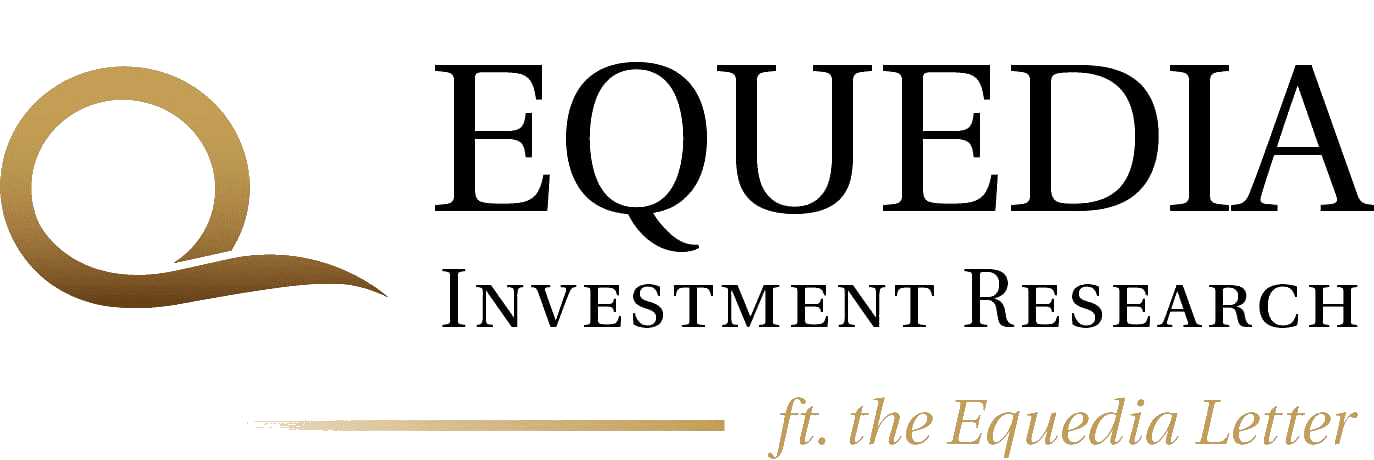
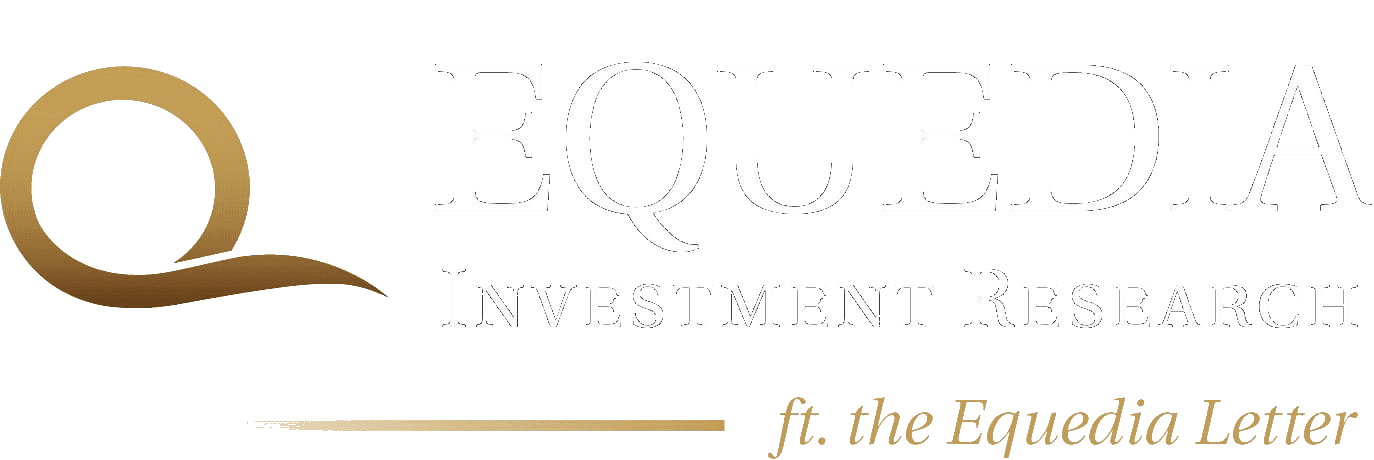





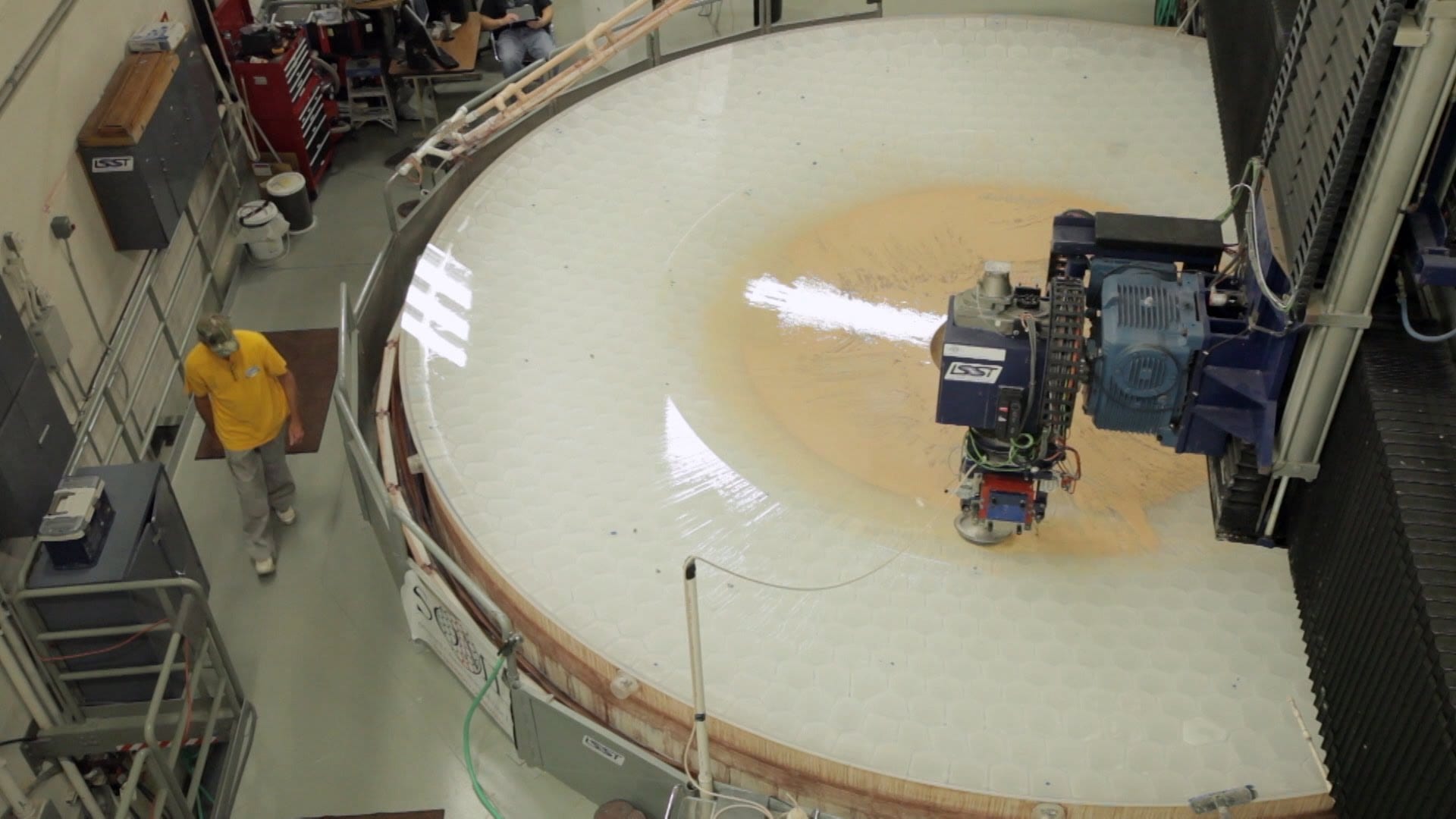





Your report states that NXO has an option to acquire Spectrum. But the link you provide to review the deal terms leads to a document which states the acquiring option holder company is a different entity named : Elissa Resources Ltd. (TSX-V: ELI; OTCQX: ELSRF; Frankfurt: E3O).
Can you please explain the discrepancy,
And can you please disclose the relationship, if any, between NXO and ELI.
Your report states that NXO has an option to acquire Spectrum. But the link you provide to review the deal terms leads to a document which states the acquiring option holder company is a different entity named : Elissa Resources Ltd. (TSX-V: ELI; OTCQX: ELSRF; Frankfurt: E3O).
Can you please explain the discrepancy,
And can you please disclose the relationship, if any, between NXO and ELI.
Great question. Elissa was the old name of the Company and since then, the Company has undergone a Change of Business to become NexOptic. In simpler terms, Elissa was Nexoptic. The deal between NexOptic and Spectrum remain the same.
It may make more sense to see this: http://nexoptic.com/company/partnership/
I hope this helps and apologize for the confusion, as I should have used the above link instead of the news release link to explain the deal.
If these guys can prove with their prototype that it works, the industry will likely go crazy. Imagine all of the mobile phones that could use this tech. Its a multi billion dollar industry and people don’t see to know this story yet.
At a $13 million value, it seems very undervalued.
the military industrial complex will sink tons of money into the research and development of this technology….and might even hold back the inplementation to the general public…….if it is indeed viable….and nxu holds the patents…..then there are bound to be other takers for a takeover…..hey goolge are you reading this…….it would fit in well with your skunkworks projects
I think the company is being tight lipped about everything that have going on. Would not be surprised to see a deal done with a big company like google or Samsung before the prototype comes out. Or maybe the company is waiting for prototype because the doors will open right away.
Press will be huge on this when it leaks
Thank you for bringing Nexoptic Techology Corp to your readers’ attention (me being one). I am wondering how the company will monetize this technology and in turn, affect the share price of NXO going forward. The share price has already run up to the mid 30 cent level recently. What is your share price expectation of NXO longer term?
Thank you Eugene for the support and kind comments.
I am not legally allowed to give my thoughts on price targets, but I look at it this way: NXO and Spectrum are companies with an incredible breakthrough. They have a current market cap of around $14 million. What could it be worth once the prototype is out? What kind of value can be attributed to something that could enhance numerous industries with potentially numerous applications?
I certainly expect higher prices, but that is solely my opinion and can be affected by market conditions, corporate ability to execute, etc.
I haven’t sold a single share during this run.
As far as business, I assume it’s only logical to license the technology since it has the potential for numerous applications. However, I can’t speak for the direction of the Company but that is my thought. Furthermore, with such a breakthrough, a prototype could make them an early takeover target; again, it’s too early to say, but these are possibilities.
I hope this helps and thanks again for your continued readership.
You said “We own shares which were purchased both in the open market and in the private placements announced on Feb 14, 2014 and Sept 21, 2015. You can do the math.”
The shares were not trading then. May I ask what prices you paid and are you being remunerated by the company?
For those of us reading your letters here in the United States may I suggest “front page” announcing that the symbol for trading NXO is ELSRF [Elissa Resources Ltd. (TSX-V: ELI; OTCQX: ELSRF; Frankfurt: E3O)].
Charles Schwab’s team helped me find the OTC symbol, however, it would have been much easier if your letter provided the same in print.
Notwithstanding that time consuming search, thank you for your all encompassing efforts, I stop everything to read your weekend missives and enjoy and Monday morning act on them 100%.
Appreciatively,
J
Hi Jock,
Thanks so much for your support and readership – it is extremely rewarding to know there are readers like you who are thankful for the time I put into my newsletters. I truly can’t thank you enough,
As you suggested, I have now added the American and German symbols directly into the posts to make it easier for those outside of Canada. I should have done it in the first place, but assumed it would confuse readers; I now know that it was more confusing to not have included it in the first place.
Thanks for the suggestion and for helping others with this.
Grateful for your readership,
Ivan
Thank you for sharing this ground breaking information.
Originally the glass was produced in Murano, an island near Venice Italy.
Super
Transparent glas has been invented in Murano, an island north east of Venice. Not at all in Milano, 280 km distance, and Milano is not an island. Just a minor issue? Or an indication of the preciseness of the article?
Murano is north west of Venice. Would anyone have noted this? By the way, it is in Europe, in Italy… necessary to mention…
Very interesting.
Welche Person seinen neuen Schlafbereich zusammenstellen will, jener wird meist seinen Traum auf ein großes Lager verwerfen, weil sich einfach der Platz für jenes Wunschbett nicht aufgabeln lässt. Häufig wird das Setzen eines Schranks oder einer Kommode als sinnvoller beurteilt, damit hinreichend Platz vorhanden ist. Doch wer sich in der großen Bettenwelt informiert, jener wird verstehen, dass er sich ein Ruhelager in Wunschgröße besorgen kann und so die präferierte Liegefläche und hinlänglich Platz und sogar Lampen zum Einsatz bringen kann. Im Besonderen in modernen Kinderzimmern ist die Platznot angesagt und so ist das Funktionsbett ein gerne gesehenes Kinderbett, dass mittels seine ungekünstelten Werkstoffe wie Gehölz voll dem Trend zu einem gesunden Raum folgt.
Can u explain what the difference between Nexoptic & the flat lense system designed at Caltech.
http://www.caltech.edu/news/future-flat-lenses-53375